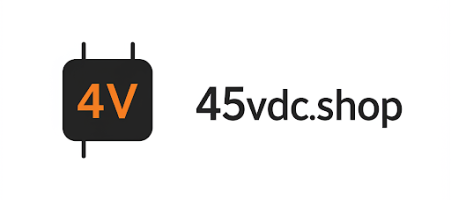High yield corporate bonds, often called “junk bonds,” present a compelling investment opportunity, but understanding their complexities is crucial. This article explores the nuances of high yield bonds, offering a practical guide to navigating the market, assessing risks, and maximizing potential returns. We’ll delve into strategies for identifying undervalued opportunities and managing the inherent volatility.
High yield corporate bonds are debt instruments issued by companies with lower credit ratings, typically below investment grade (rated Ba1/BB+ or lower by Moody’s and S&P, respectively). These bonds offer higher yields than investment-grade bonds to compensate investors for the increased risk of default. It is necessary to understand the context of high yield corporate bonds before one can determine whether to invest in them.
Credit Ratings and Risk
The risk associated with high yield bonds stems from the issuer’s financial instability. Credit rating agencies like Moody’s and Standard & Poor’s assess the creditworthiness of bond issuers. Lower ratings indicate a higher probability of default, where the issuer fails to make timely interest or principal payments.
Yield Spreads: A Key Indicator
Yield spread refers to the difference between the yield on a high yield bond and the yield on a comparable maturity Treasury bond. A wider spread signals increased risk aversion in the market or specific concerns about the issuer’s financial health. Monitoring yield spreads can provide valuable insights into market sentiment and potential investment opportunities. Keep in mind that you need to follow closely the changes about spread.
Investing in high yield corporate bonds requires a strategic approach to manage risk and identify potentially lucrative opportunities. Here are some key considerations:
Due Diligence: Evaluating Issuers
Thoroughly researching the issuer is paramount. This involves analyzing the company’s financial statements, industry outlook, competitive landscape, and management team. Focus on factors like revenue growth, profitability, cash flow, and debt levels. A company with a sustainable business model and a clear path to profitability is a more attractive investment.
Diversification: Spreading the Risk
Diversification is essential to mitigate the risk of individual bond defaults. Investing in a diversified portfolio of high yield bonds across different sectors and industries can help to reduce overall portfolio volatility. Consider using high yield bond exchange-traded funds (ETFs) or mutual funds to achieve diversification efficiently.
Interest Rate Sensitivity
High yield bonds are generally less sensitive to interest rate changes than investment-grade bonds. This is because the higher yield provides a cushion against rising rates. However, changes in interest rates can still impact bond prices, so it’s crucial to consider the interest rate environment when making investment decisions.
Monitoring Economic Conditions
Macroeconomic conditions play a significant role in the performance of high yield bonds. Economic growth typically supports high yield bond prices, while recessions can lead to increased defaults and lower bond prices. Keep a close watch on economic indicators like GDP growth, inflation, and unemployment rates.
Having spent years analyzing fixed income markets, including a focus on high yield, I’ve learned a few crucial lessons that aren’t always apparent in textbooks or research reports.
The Human Element: Beyond the Numbers
Financial analysis is essential, but it’s just one piece of the puzzle. I’ve seen companies with seemingly strong financials stumble due to poor management decisions or unforeseen operational challenges. Meeting with management teams, understanding their strategy, and assessing their track record can provide valuable insights that numbers alone can’t reveal. This involves assessing a company’s team, strategy, and operational efficacy.
The Liquidity Trap: Knowing When to Exit
High yield bond markets can become illiquid quickly, especially during periods of market stress. Trying to sell bonds when everyone else is selling can lead to significant losses. Having a clear exit strategy and being prepared to act quickly is crucial. This can be a real challenge, especially for individual investors.
The Power of Patience: Avoiding Panic
High yield investing is not for the faint of heart. There will be periods of volatility and uncertainty. It’s important to remain calm and avoid making impulsive decisions based on short-term market fluctuations. Sticking to your investment strategy and focusing on the long-term fundamentals can lead to better outcomes.
The Importance of Independent Thinking
It’s easy to get caught up in the herd mentality, especially when everyone is bullish or bearish on a particular sector or company. Developing your own independent analysis and forming your own opinions is crucial for success. Don’t be afraid to go against the crowd if your research supports it. This involves formulating unique insights and perspectives.
Finding undervalued bonds is the holy grail of high yield investing. Here are some strategies to consider:
Sector Rotation
Identifying sectors that are temporarily out of favor can uncover undervalued opportunities. For instance, a sector facing short-term headwinds but with long-term growth potential may present attractive entry points. Look for sectors with solid fundamentals but are currently experiencing temporary setbacks.
Fallen Angels
These are bonds that were once investment grade but have been downgraded to high yield. Often, the market overreacts to the downgrade, creating opportunities to buy these bonds at a discount. However, thorough due diligence is crucial to assess the company’s ability to regain its investment-grade status.
Distressed Debt
Investing in distressed debt involves buying bonds of companies facing significant financial challenges or even bankruptcy. This is a high-risk, high-reward strategy that requires specialized expertise and a deep understanding of bankruptcy law. The potential upside is substantial, but the risk of loss is also significant.
Analyzing Credit Spreads
Monitoring credit spreads can help identify undervalued bonds. If a bond’s credit spread is wider than its peers with similar credit ratings and maturities, it may be undervalued. However, it’s essential to understand the reasons behind the wider spread before making an investment decision.
Effective risk management is paramount for successful high yield investing. Here are some key strategies:
Setting Stop-Loss Orders
Stop-loss orders can help to limit potential losses by automatically selling a bond if its price falls below a certain level. This can be a useful tool for protecting against unexpected market downturns or company-specific events. Consider the volatility of the bond when setting stop-loss levels.
Hedging Strategies
Using hedging strategies, such as buying credit default swaps (CDS), can help to protect against credit risk. CDS are insurance contracts that pay out if a bond issuer defaults. Hedging can reduce portfolio volatility but also adds to the cost of investing.
Maintaining Liquidity
Maintaining sufficient liquidity in your portfolio allows you to take advantage of opportunities that arise during market downturns. Having cash on hand enables you to buy bonds at discounted prices when others are forced to sell. Aim to keep a portion of your portfolio in cash or highly liquid investments.
Credit rating agencies play a vital role in the high yield bond market. These agencies assess the creditworthiness of bond issuers and assign ratings that reflect the probability of default. While credit ratings are a valuable tool, it’s important to remember that they are not foolproof. Investors should conduct their own independent analysis and not rely solely on credit ratings.
Credit Rating Downgrades
A credit rating downgrade can have a significant impact on the price of a high yield bond. Downgrades often trigger selling pressure, leading to lower prices. It’s crucial to monitor credit ratings and be prepared to take action if a bond is downgraded.
Credit Rating Upgrades
A credit rating upgrade can boost the price of a high yield bond. Upgrades often attract new investors, leading to increased demand and higher prices. Identifying companies that are likely to be upgraded can be a profitable investment strategy.
High yield corporate bonds can be a valuable addition to a diversified portfolio, offering the potential for attractive returns. However, investing in these bonds requires careful analysis, a strategic approach to risk management, and a deep understanding of the market dynamics. By conducting thorough due diligence, diversifying your portfolio, and remaining disciplined, you can navigate the high yield market successfully and achieve your investment goals. Remember, knowledge and a well-defined strategy are your best defenses in the world of high yield.
Table: High Yield vs. Investment Grade Bonds
| Feature | High Yield Bonds | Investment Grade Bonds |
|---|---|---|
| Credit Rating | Below Baa3/BBB- | Baa3/BBB- or higher |
| Yield | Higher | Lower |
| Default Risk | Higher | Lower |
| Interest Rate Sensitivity | Lower | Higher |
| Market Volatility | Higher | Lower |
| Issuer Type | Companies with weaker financials | Companies with strong financials |
| Economic Sensitivity | More sensitive to economic downturns | Less sensitive to economic downturns |
FAQ Schema
Supporting Resources:
* Investopedia: https://www.investopedia.com/terms/h/high_yield_bond.asp
* Wikipedia: https://en.wikipedia.org/wiki/High-yield_debt
About us
Welcome to 45vdc.shop – Your Ultimate Resource for Stock Market & Loan Mastery! Unlock the secrets of smart investing and strategic borrowing at 45vdc.shop. Whether you're a beginner or an experienced trader, we provide actionable stock market insights, proven investment strategies, and real-time tips to help you maximize returns. Need financial flexibility? Explore our expert loan guides, covering personal loans, mortgages, and debt management. Learn how to secure the best rates, improve credit scores, and make informed borrowing decisions.

